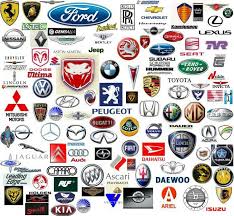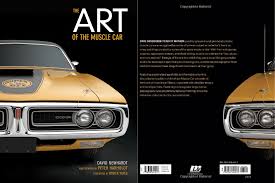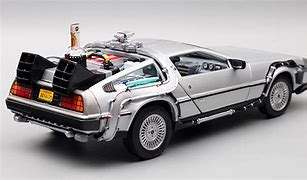A brief history of
Saab
Introduction
The car manufacturer Saab has made an important impact on the automotive world. In this article we will give a brief but detailed history of the Saab marque.
We will look at the origins of Saab looking at who, why, where and when Saab was founded. We'll look at the design of the iconic Saab logo and what are some the more significant Saab models.
We'll take a glance at what racing history the Saab has and who some of the most important people have been in the history of Saab over the years.
Who, where, when and why was
Saab founded?
Saab, the Swedish car manufacturer, has a fascinating history that dates back to the late 1930s. The company was founded in 1937 in Trollh�ttan, Sweden, with the aim of providing aircraft for the Swedish Air Force. The acronym "Saab" stands for Svenska Aeroplan Aktiebolaget, which translates to Swedish Aircraft Corporation.
The story of Saab's founding begins with the Swedish government's decision to establish an aircraft manufacturer to meet the country's defense needs. Saab's initial focus was on producing aircraft, and its early years were marked by significant achievements in aviation technology. However, as World War II came to an end, Saab faced the challenge of transitioning its operations from military aircraft production to civilian endeavors.
In the late 1940s, Saab embarked on a new venture: automobile manufacturing. The decision to enter the automotive industry was driven by a desire to utilize the company's engineering expertise and diversify its product portfolio. Saab aimed to produce cars that embodied the same values of innovation, performance, and safety that had defined its aircraft manufacturing heritage.
The first Saab car, the Saab 92, was introduced in 1949. It was a compact and aerodynamic vehicle that showcased Saab's commitment to cutting-edge design and engineering. The Saab 92 featured a two-stroke engine and front-wheel drive, which were innovative features at the time. The car quickly gained popularity in Sweden and laid the foundation for Saab's future success in the automotive industry.
Throughout the following decades, Saab continued to develop and refine its car models, building a reputation for producing reliable, safe, and distinctive vehicles. Saab cars were known for their Scandinavian design, advanced engineering, and focus on driver and passenger safety. The brand's commitment to safety was evident in the development of groundbreaking technologies such as impact-absorbing bumpers and headlight wipers.
One of Saab's defining characteristics was its dedication to innovation. The company was at the forefront of advancements in turbocharging technology, introducing turbocharged engines in its production cars as early as the 1970s. This allowed Saab vehicles to deliver enhanced performance and fuel efficiency without compromising on reliability.
Over the years, Saab faced various challenges, including financial difficulties and ownership changes. The brand was acquired by General Motors (GM) in 2000, which aimed to expand Saab's presence in the global market. However, despite efforts to revitalize the brand, Saab struggled to achieve profitability under GM's ownership.
In 2010, Saab was sold to the Dutch car manufacturer Spyker Cars. Unfortunately, the financial difficulties persisted, and production ceased in 2011. Despite the challenges and ultimate discontinuation of Saab's operations, the brand left a lasting legacy in the automotive industry.
Throughout its existence, Saab was known for its commitment to engineering excellence, innovative design, and safety. The company's aircraft manufacturing heritage translated into cars that offered exceptional aerodynamics, performance, and reliability. Saab vehicles were designed with a focus on driver experience and passenger safety, embodying the brand's core values.
While Saab may no longer produce vehicles, its impact on the automotive industry and its loyal fan base cannot be overlooked. The Saab name represents a blend of aviation-inspired engineering, Scandinavian design, and a commitment to pushing the boundaries of automotive technology. Saab's legacy serves as a reminder of the brand's pioneering spirit and its contributions to the development of the automotive industry.
How did the
Saab logo originate?

How did the Saab logo originate?
The Saab logo has undergone several changes throughout the history of the company, reflecting the brand's evolution and its core values. The earliest versions of the Saab logo featured the full name of the company, "Saab Svenska Aeroplan Aktiebolaget," displayed in a simple and straightforward typographic design. The emphasis was on clarity and legibility, aligning with the brand's focus on engineering excellence and precision.
In the 1960s, Saab introduced a more iconic emblem that would become synonymous with the brand. The Saab logo consisted of a stylized griffin, a mythical creature with the body of a lion and the head of an eagle. The griffin symbolized strength, power, and a fusion of two dominant traits: land and air. This logo reflected Saab's aviation heritage and its commitment to producing vehicles that were both dynamic on the road and inspired by the innovations of the aerospace industry.
Throughout the years, the Saab logo went through subtle refinements to modernize its design while retaining the essence of the original emblem. The griffin motif became sleeker and more streamlined, reflecting the evolving design trends of the automotive industry. The typography accompanying the logo also evolved, with variations in lettering styles and arrangement to enhance visual appeal and brand recognition.
With each iteration of the logo, Saab aimed to capture the brand's unique identity and convey its values of innovation, performance, and Scandinavian design. The Saab logo served as a visual representation of the brand's commitment to engineering excellence, safety, and a passion for pushing the boundaries of automotive technology.
Although Saab faced challenges in its later years and eventually ceased production, the logo remains a symbol of the brand's legacy and its contribution to the automotive industry. The Saab logo continues to be recognized by enthusiasts and car enthusiasts worldwide, representing the brand's history, achievements, and enduring impact.
What are some of the significant
Saab models?
Throughout its history, Saab has produced several significant models that have left a lasting impact on the automotive industry and solidified the brand's reputation for innovation, safety, and distinctive design. These models span various decades, showcasing Saab's evolution and its commitment to engineering excellence.
One of Saab's most iconic models is the Saab 900, introduced in 1978. The Saab 900 represented a significant leap forward for the brand, featuring a distinct hatchback design and innovative engineering. The 900 was praised for its advanced safety features, including a reinforced safety cage, energy-absorbing bumpers, and a front crumple zone. It also introduced several cutting-edge technologies, such as turbocharging and Saab's unique Night Panel instrument cluster. The Saab 900 became a symbol of Saab's commitment to producing cars that offered a combination of performance, safety, and practicality.
In the 1990s, Saab introduced the Saab 9000, a luxurious and spacious executive car that further elevated the brand's standing. The Saab 9000 boasted advanced features, including an ergonomically designed cockpit, electronic climate control, and an integrated safety system. It offered impressive performance with its turbocharged engines and showcased Saab's expertise in combining comfort, performance, and safety in a single package. The Saab 9000 was praised for its refined ride, distinctive styling, and exceptional build quality, solidifying Saab's position in the premium automobile segment.
Continuing into the 21st century, Saab unveiled the Saab 9-3, a compact executive car that represented a new era for the brand. The 9-3 showcased a sleek and modern design, incorporating Saab's signature design elements, such as the distinctive grille and aerodynamic lines. The model featured advanced safety technologies, including the innovative Saab Active Head Restraint (SAHR) system and electronic stability control. The Saab 9-3 also offered a range of engine options, including turbocharged petrol and diesel engines, catering to a variety of preferences and needs. The 9-3 exemplified Saab's commitment to combining performance, safety, and Scandinavian design.
Another noteworthy model in Saab's lineup is the Saab 9-5, a premium executive car introduced in the late 1990s. The 9-5 embodied Saab's commitment to engineering excellence and cutting-edge technology. It featured a distinctive design, advanced safety features, and innovative solutions, such as the Saab Active Head Restraint system and Saab's Night Panel instrument cluster. The 9-5 also offered a range of powerful engines, including turbocharged petrol and diesel options, delivering exceptional performance and fuel efficiency. The Saab 9-5 combined comfort, luxury, and performance, establishing itself as a formidable competitor in the executive car segment.
In addition to these notable models, Saab produced other significant vehicles throughout its history, including the Saab 96, a compact car that achieved considerable success in rallying, and the Saab Sonett, a sleek sports car that captured attention with its unique design and performance capabilities. These models further showcased Saab's ability to produce vehicles that catered to different segments and showcased the brand's engineering prowess and innovation.
Each of these significant models contributed to Saab's reputation for producing cars that emphasized safety, performance, and distinctive design. Saab vehicles were known for their unique blend of Scandinavian design, advanced technology, and innovative solutions. The brand's commitment to engineering excellence and its ability to deliver vehicles that offered a combination of practicality, performance, and safety solidified Saab's place in the automotive industry.
While Saab may no longer be producing vehicles, its legacy lives on through these significant models and the impact they made on the automotive landscape. The Saab 900, 9000, 9-3, and 9-5, among others, represent the brand's commitment to innovation, craftsmanship, and engineering excellence, leaving a lasting impression on car enthusiasts and Saab loyalists alike.

One of Saab's Most Iconic Models
Who are some of the most important people in
Saab's History
Behind Saab's success and its contributions to the automotive industry are the individuals who have played significant roles in shaping the brand's direction, engineering prowess, and innovation. These notable individuals have left their mark on Saab's history, elevating the brand's reputation and ensuring its enduring legacy.
One of the key figures in Saab's history is Erik Carlsson, a Swedish rally driver who became synonymous with the brand's success in motorsport. Carlsson, also known as "Mr. Saab," achieved remarkable victories in rally racing, particularly in the iconic Saab 96. His skillful driving and close association with Saab's rally program not only brought numerous victories but also helped elevate the brand's profile and fostered a strong connection between Saab and its enthusiastic fan base.
Another notable individual is Gunnar Ljungstr�m, an engineer who played a pivotal role in the development of Saab's aircraft and automotive projects. Ljungstr�m was instrumental in the design of Saab's early aircraft, showcasing his expertise in aerodynamics and engineering innovation. His contributions extended to the automotive division, where he played a key role in designing Saab's first production car, the Saab 92. Ljungstr�m's engineering prowess and dedication to pushing the boundaries of design and performance laid the foundation for Saab's success in both aviation and automotive endeavors.
Another influential figure in Saab's history is Bj�rn Envall, a renowned automotive designer who made a significant impact on the brand's aesthetic identity. Envall played a crucial role in shaping Saab's design language, characterized by clean lines, functional aesthetics, and a focus on Scandinavian simplicity. His design contributions can be seen in notable Saab models such as the Saab 900 and Saab 9000. Envall's ability to blend form and function resulted in cars that were not only visually appealing but also aerodynamically efficient, reflecting Saab's commitment to innovation and performance.
Another individual who left an indelible mark on Saab is Rune Hellstr�m, an engineer responsible for many of Saab's groundbreaking innovations in safety and crash testing. Hellstr�m led Saab's research and development in safety engineering, resulting in numerous advancements that helped establish Saab as a pioneer in automotive safety. His work included the development of safety cages, impact-absorbing structures, and the use of computer simulations to improve crashworthiness. Hellstr�m's contributions to automotive safety not only enhanced Saab's reputation but also had a broader impact on the industry as a whole.
Additionally, notable executives such as Victor Muller and Kjell Olofsson played crucial roles in steering Saab through challenging times and fostering partnerships to ensure the brand's survival. Muller, as the CEO of Spyker Cars, acquired Saab from General Motors and worked tirelessly to revitalize the brand. Olofsson, as the CEO of Saab Automobile AB, focused on restructuring and repositioning Saab within the global automotive market. Both individuals demonstrated leadership and a commitment to preserving Saab's heritage while charting a course for future success.
These individuals, among many others, have made significant contributions to Saab's legacy. Their expertise, passion, and dedication have shaped Saab's engineering excellence, design philosophy, motorsport achievements, and commitment to safety. Through their visionary leadership and technical expertise, they have played a crucial role in establishing Saab as a respected and admired name in the automotive industry.
While Saab's production of vehicles has ceased, the contributions of these individuals remain integral to Saab's enduring reputation and the admiration of car enthusiasts worldwide. Their collective efforts have shaped the identity and heritage of the Saab brand, leaving a lasting impact on the automotive landscape.

One of the most influential people in the history of Saab
Saab's Racing History
Saab's racing history is filled with remarkable achievements and successes, particularly in the world of rallying. The brand's dedication to performance, innovation, and durability translated into memorable moments on the race tracks and rally stages, solidifying Saab's reputation as a formidable competitor in motorsport.
One of the most notable periods in Saab's racing history occurred in the 1960s and 1970s, with the Saab 96 becoming an icon in rally racing. Saab's success in rallying was largely attributed to the exceptional driving skills of Erik Carlsson, who became synonymous with Saab's rally program. Carlsson, also known as "Mr. Saab," achieved remarkable victories in the Saab 96, showcasing the car's durability and performance. His wins in prestigious events like the Monte Carlo Rally, the RAC Rally, and the Swedish Rally elevated Saab's reputation and attracted a loyal fan base.
Another significant moment in Saab's racing history came in 1996 when Saab introduced the Saab 900 Talladega Challenge. The objective was to break as many international and endurance records as possible in a 24-hour period on the Talladega Superspeedway in the United States. The Saab 900 achieved an average speed of over 140 mph and set 26 international and endurance records, including an impressive distance of 2,000 miles covered in 24 hours. This achievement showcased Saab's engineering prowess and demonstrated the brand's commitment to performance and endurance.
Additionally, Saab's participation in touring car championships left a lasting impact on the brand's racing legacy. In the early 2000s, Saab competed in the Swedish Touring Car Championship (STCC) with the Saab 9-3. The Saab 9-3 race car, equipped with a turbocharged engine and advanced aerodynamics, showcased the brand's commitment to performance and technology. Saab achieved notable success in the STCC, with multiple victories and podium finishes, further solidifying the brand's racing credentials.
Furthermore, Saab's racing heritage extended beyond rally and touring car championships. The brand's dedication to innovation and performance was evident in its involvement in endurance racing. Saab participated in events such as the 24 Hours of Le Mans and the 12 Hours of Sebring, showcasing the brand's ability to compete on the global stage. While Saab's endurance racing efforts may not have achieved the same level of success as its rally and touring car endeavors, they underscored the brand's pursuit of pushing the limits and testing the capabilities of its vehicles in demanding racing conditions.
Saab's racing history is a testament to the brand's commitment to performance, durability, and engineering excellence. The success achieved in rallying, endurance racing, and touring car championships showcased Saab's ability to combine performance with reliability. These racing achievements not only enhanced Saab's reputation but also demonstrated the brand's dedication to pushing the boundaries of automotive technology and delivering vehicles that could excel in the most demanding racing conditions.
While Saab's production of vehicles has ceased, its racing legacy lives on, celebrated by motorsport enthusiasts and Saab fans worldwide. The brand's participation in rally racing, endurance events, and touring car championships left an indelible mark on the racing world and solidified Saab's place in automotive history.
Summary
Saab, the Swedish car manufacturer, has established a remarkable legacy in the automotive industry through its commitment to innovation, safety, and distinctive design. With a history rooted in aviation, Saab brought its engineering expertise to the world of automobiles, creating vehicles that were known for their performance, reliability, and Scandinavian simplicity.
Throughout its history, Saab produced several significant models that left a lasting impact. From the iconic Saab 900 and 9000 to the innovative Saab 9-3 and 9-5, each vehicle showcased Saab's dedication to engineering excellence, safety, and practicality. Saab's commitment to performance extended to the realm of motorsport, with notable achievements in rally racing and touring car championships. The brand's racing legacy further solidified Saab's reputation and showcased the brand's ability to combine performance with reliability.
Although Saab faced challenges in its later years and eventually ceased production, its contributions to the automotive industry remain influential. Saab's legacy is defined by its distinctive design language, advanced safety features, and engineering innovation. The brand's vehicles continue to be celebrated by enthusiasts for their unique blend of performance, safety, and Scandinavian design. Saab's enduring impact on the automotive landscape ensures its place in the annals of automotive history.
View Saab Car Specifications
More Manufacturer Histories.

























